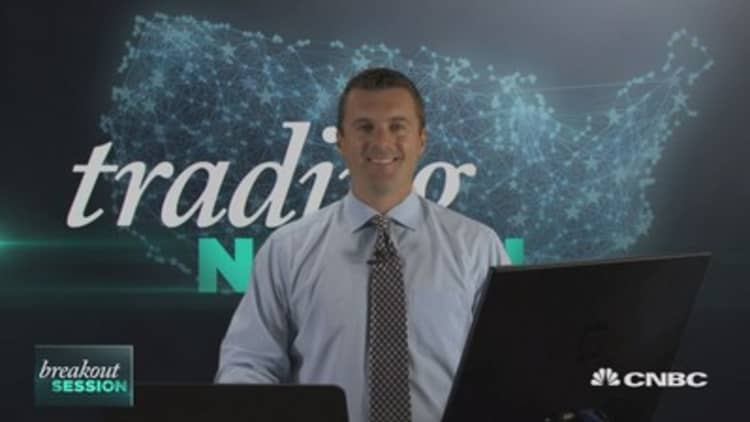


With Janet Yellen set to speak at Jackson Hole on Friday, one trader believes that history could predict the Federal Reserve's next move.
Todd Gordon of TradingAnalysis.com takes a look at a few charts to determine whether or not the Fed could hike rates. His conclusion is based on past summer chart movements following consolidations.
"Though we are in the summer doldrums, the consolidation that we've seen, which is quite typical in summer, [tends to] resolve in the direction of the trend that was in place prior to the consolidation," Gordon said Monday on CNBC's "Trading Nation."
First, Gordon takes a look at the SPY, the ETF that tracks the S&P 500. Gordon points out that prior to consolidating in August, the SPY was on an uptrend. As a result, Gordon expects the market to break out of consolidation to the upside again, mirroring the trend going into summer.
Next, Gordon looks at a chart of the TLT, which tracks long-term bonds of 20 years or more. Like the SPY, the TLT had risen prior to its summer consolidation, meaning that Gordon expects the TLT to rise in the near term.
But here, Gordon notes that the simultaneous rise of both stocks and bonds could be important for the Fed.
"If stocks and bonds are going to rally together, that generally means the Fed is probably still behind the markets in terms of accommodative policy," explains Gordon. "[They could] just increase a quarter rate, and then just kind of sit back and see how the market absorbs [that raise] for a period of time."
To further make his point, Gordon examines the charts for both gold and the dollar. Gordon believes the gold chart suggests that the "uptrend will resume," with a rise in gold "generally [pointing] to easy Fed policy."
Gordon's final chart is the dollar-tracking ETF, which has seen a bit of a bounce this summer but was on the downtrend before then. The falling dollar, according to Gordon, is the final indicator of a relaxed policy from the Fed.
"If the dollar is falling, that generally means that the U.S. is deemed to have less competitive interest rates abroad," said Gordon. "So, this bid up in the dollar that we've seen in the last couple of years ahead of increasing interest rates, that play's starting to come off because it looks like the Fed's going to be right around where the rest of the central banks are, [which is] right near the floor."






